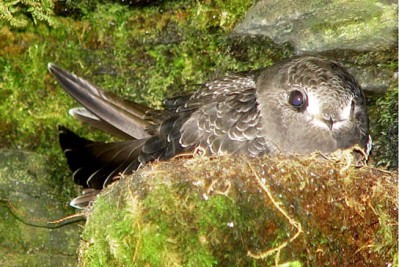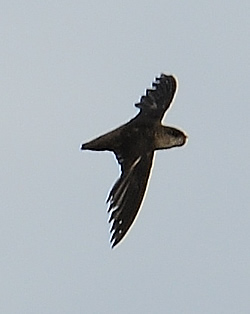Category Archives: animals
camel
Animals
google.load(“elements”, “1”, {packages: “transliteration”});
The word “tiger” is taken from the Greek word “tigris”, which is possibly derived from a Persian source meaning “arrow”, a reference to the animal’s speed.
The tiger (Panthera tigris), a member of the Felidae family, is the largest of the four “big cats” in the genus Panthera. Native to much of eastern and southern Asia, the tiger is an apex predator and an obligate carnivore. Reaching up to 3.3 metres (11 ft) in total length, weighing up to 300 kilograms (660 pounds), and having canines up to 4 inches long,the larger tiger subspecies are comparable in size to the biggest extinct felids. Aside from their great bulk and power, their most recognisable feature is a pattern of dark vertical stripes that overlays near-white to reddish-orange fur, with lighter underparts. The most numerous tiger subspecies is the Bengal tiger while the largest is the Siberian tiger.
Diet:
Over much of the tiger’s broad geographic range, wild pig, wild cattle and several species of deer are its major prey. All prey are forest or grassland ungulates that range in size from 65 to 2,000 pounds (30-900 kg). Typically, wild tigers gorge themselves on fresh kills, and can eat as much as 40 pounds (18 kg) of meat at one time. The tiger will not eat again for several days.
Following mating, the gestation period for tigers is approximately103 days. The male tiger does not stay with the female after mating, and does not participate in raising the cubs. The average litter size of tigers is 2 or 3 cubs (the largest is 5). One usually dies at birth. Once a tigress has mated and given birth to cubs, she will not come into estrus again until her cubs are between one and a half and three years of age, with enough skills to begin life on their own.
Tigers have a lifespan of 10–15 years in the wild, but can live longer than 20 years in captivity. They are highly adaptable and range from the Siberian taiga to open grasslands and tropical mangrove swamps.
Causes of being extinct :
They are territorial and generally solitary animals, often requiring large contiguous areas of habitat that support their prey demands. This, coupled with the fact that they are indigenous to some of the more densely populated places on earth, has caused significant conflicts with humans. Three of the nine subspecies of modern tiger have gone extinct, and the remaining six are classified as endangered, some critically so. The primary direct causes are habitat destruction, fragmentation and hunting.
Subspecies :
There are nine recent subspecies of tiger, three of which are extinct.
The Indochinese Tiger :
The Indochinese Tiger (Panthera tigris corbetti), also called Corbett’s tiger, is found in Cambodia, China, Laos, Burma, Thailand, and Vietnam. These tigers are smaller and darker than Bengal tigers: Males weigh from 150–190 kg (330–420 lb) while females are smaller at 110–140 kg (240–310 lb). Their preferred habitat is forests in mountainous or hilly regions. Estimates of the Indochinese tiger population vary between 1,200 to 1,800, with only several hundred left in the wild.
The Malayan Tiger (Panthera tigris jacksoni), exclusively found in the southern part of the Malay Peninsula, was not considered a subspecies in its own right until 2004. The new classification came about after a study by Luo et al. from the Laboratory of Genomic Diversity Study, part of the National Cancer Institute of the United States. Recent counts showed there are 600–800 tigers in the wild, making it the third largest tiger population, behind the Bengal tiger and the Indochinese tiger. The Malayan tiger is the smallest of the mainland tiger subspecies, and the second smallest living subspecies, with males averaging about 120 kg and females about 100 kg in weight.
The Sumatran Tiger :
The Sumatran Tiger (Panthera tigris sumatrae) is found only on the Indonesian island of Sumatra, and is critically endangered. It is the smallest of all living tiger subspecies, with adult males weighing between 100–140 kg (220–310 lb) and females 75–110 kg (170–240 lb).
The Siberian tiger (Panthera tigris altaica), also known as the Amur, Manchurian, Altaic, Korean or North China tiger, which is the most northernmost subspecies, is confined to the Amur-Ussuri region of Primorsky Krai and Khabarovsk Krai in far eastern Siberia, where it is now protected. The largest subspecies of tiger, it has a head and body length of 160–180 cm for females and 190–230+ cm for males, plus a tail of about 60–110 cm long (about 270–330 cm in total length) and an average weight of around 227 kilograms (500 lb) for males.
The South China Tiger :
The South China Tiger (Panthera tigris amoyensis), also known as the Amoy or Xiamen tiger, is the most critically endangered subspecies of tiger and is listed as one of the 10 most endangered animals in the world. One of the smaller tiger subspecies, the length of the South China tiger ranges from 2.2–2.6 m (87–100 in) for both males and females. Males weigh between 127 and 177 kg (280 and 390 lb) while females weigh between 100 and 118 kg (220 and 260 lb).
Extinct subspecies
The Bali Tiger :
The Bali Tiger (Panthera tigris balica) was limited to the island of Bali. They were the smallest of all tiger subspecies, with a weight of 90–100 kg in males and 65–80 kg in females. These tigers were hunted to extinction—the last Balinese tiger is thought to have been killed at Sumbar Kima, West Bali on 27 September 1937; this was an adult female. No Balinese tiger was ever held in captivity. The tiger still plays an important role in Balinese Hinduism.
The Javan tiger (Panthera tigris sondaica) was limited to the Indonesian island of Java. It now seems likely that this subspecies became extinct in the 1980s, as a result of hunting and habitat destruction, but the extinction of this subspecies was extremely probable from the 1950s onwards (when it is thought that fewer than 25 tigers remained in the wild). The last confirmed specimen was sighted in 1979, but there were a few reported sightings during the 1990s. With a weight of 100–141 kg for males and 75–115 kg for females, the Javan tiger was one of the smaller subspecies, approximately the same size as the Sumatran tiger.
The Caspian Tiger :
The Caspian Tiger (formerly Panthera tigris virgata), also known as the Persian tiger or Turanian tiger was the westernmost population of Siberian tiger, found in Iran, Iraq, Afghanistan, Turkey, Mongolia, Kazakhstan, the Caucasus, Tajikistan, Turkmenistan, and Uzbekistan until it apparently became extinct in the late 1950s, though there have been several alleged more recent sightings of the tiger.Though originally thought to have been a distinct subspecies, genetic research in 2009 suggest that the animal was largely identical to the Siberian tiger.
Most beautiful Tigers..!!
In the public eye white, or more correctly, chinchilla tigers are perhaps the colour which is to be most admired. The correct term for these tigers is chinchilla albinistic: blue eyed, lacking in phaeomelanin, pale-coated, but having a pattern.
These tigers grow faster and heavier than their orange counterparts and with their pale ice blue eyes, white fur with chocolate stripes, pink noses and pink paw pads they are indeed a beautiful sight. Unfortunately, beauty brings a curse and with the white tiger that curse is one of extreme inbreeding. The beautiful white specimen shown at the top of this page displays some evidence of breeding depression in having crossed eyes.
What causes white tigers?:
A white tiger can only be born when both parents carry the unusual gene for white colouring. The double recessive allele in the genetic code only turns up naturally about once in every 10,000 births. For unexplained reasons it seems to occur only in the Bengal subspecies.
Reports of white Amur tigers are incorrect. These tigers are Bengals which have, at some point in time, been hybridised with the Amur subspecies, so polluting their genetic code. However, they must have the Bengal parentage to produce the white pelage.
There are only a small quantity of white tigers in existence and present numbers are put in the region of 500. With the inevitable inbreeding problems a debate continually rages over the wisdom of breeding this animal. White tigers, white lions, white peacocks, none are representative of their wild populations.
The Tiger Species Survival Programme has actively discouraged breeding white tigers because of their mixed ancestry. Most of these animals have been hybridised with members of other subspecies — usually of an unknown lineage.
Other organisations object to white tigers both because of the lack of genetic diversity and because it serves no practical conservation purpose.
Some opponents state that white tiger breeding only inflates the stud book entries for zoos and provides a popular exhibit which helps increase attendance and revenue.
The US$1,600 per year spent feeding each of these tigers is effectively being outlaid on two hundred or so pretty freaks. However, it must be admitted that there is a plus to this in that the money earned can be put towards saving all tigers and the white specimens earn more than they cost in revenue from the visiting public.
Occasionally you will hear people referring to white tigers from a subspecies other than the Bengal. These are hybrids and may occur if a zoo chooses to mate a white Bengal with a tiger from another subspecies; this then produces a white hybrid tiger.
The studbook for the purebred white Bengal tiger counts only 43 animals, the rest seen are of unknown heritage, or they are hybrids.
Myths surrounding the white tiger:
A common myth surrounding the white tiger is that they are from Siberia and their coat colour camouflages them in snow. This is incorrect.
The truth is that white tigers come from India and of the approximately forty purebred white tigers in captivity most remain in that country.
The white tiger is not a separate subspecies; it would perhaps be more accurate to call it an aberrant colouration. Because they are not a separate tiger type they are also not an ‘endangered species’.
Perhaps the most common myth is that white tigers are albinos, but without pigment they would also not have stripes, coloured noses and paw pads, and lip mottling. Their skin would be milky and not striped.
A little-known fact is that white tigers do not always have ice blue eyes; they may be green or amber. Again, this requires pigment in the eyes that an albino would not have.
Some historic myths also surrounded the white tiger:
Native princes of northern India considered them as rarities and prize specimens were kept in private zoos.
In the kingdom of Assam the belief existed that anyone sighting a white tiger would soon die. It’s a myth that remains today.
TIGERS
google.load(“elements”, “1”, {packages: “transliteration”});
The word “tiger” is taken from the Greek word “tigris”, which is possibly derived from a Persian source meaning “arrow”, a reference to the animal’s speed.
The tiger (Panthera tigris), a member of the Felidae family, is the largest of the four “big cats” in the genus Panthera. Native to much of eastern and southern Asia, the tiger is an apex predator and an obligate carnivore. Reaching up to 3.3 metres (11 ft) in total length, weighing up to 300 kilograms (660 pounds), and having canines up to 4 inches long,the larger tiger subspecies are comparable in size to the biggest extinct felids. Aside from their great bulk and power, their most recognisable feature is a pattern of dark vertical stripes that overlays near-white to reddish-orange fur, with lighter underparts. The most numerous tiger subspecies is the Bengal tiger while the largest is the Siberian tiger.
Diet:
Over much of the tiger’s broad geographic range, wild pig, wild cattle and several species of deer are its major prey. All prey are forest or grassland ungulates that range in size from 65 to 2,000 pounds (30-900 kg). Typically, wild tigers gorge themselves on fresh kills, and can eat as much as 40 pounds (18 kg) of meat at one time. The tiger will not eat again for several days.
Following mating, the gestation period for tigers is approximately103 days. The male tiger does not stay with the female after mating, and does not participate in raising the cubs. The average litter size of tigers is 2 or 3 cubs (the largest is 5). One usually dies at birth. Once a tigress has mated and given birth to cubs, she will not come into estrus again until her cubs are between one and a half and three years of age, with enough skills to begin life on their own.
Tigers have a lifespan of 10–15 years in the wild, but can live longer than 20 years in captivity. They are highly adaptable and range from the Siberian taiga to open grasslands and tropical mangrove swamps.
Causes of being extinct :
They are territorial and generally solitary animals, often requiring large contiguous areas of habitat that support their prey demands. This, coupled with the fact that they are indigenous to some of the more densely populated places on earth, has caused significant conflicts with humans. Three of the nine subspecies of modern tiger have gone extinct, and the remaining six are classified as endangered, some critically so. The primary direct causes are habitat destruction, fragmentation and hunting.
Subspecies :
There are nine recent subspecies of tiger, three of which are extinct.
The Indochinese Tiger :
The Indochinese Tiger (Panthera tigris corbetti), also called Corbett’s tiger, is found in Cambodia, China, Laos, Burma, Thailand, and Vietnam. These tigers are smaller and darker than Bengal tigers: Males weigh from 150–190 kg (330–420 lb) while females are smaller at 110–140 kg (240–310 lb). Their preferred habitat is forests in mountainous or hilly regions. Estimates of the Indochinese tiger population vary between 1,200 to 1,800, with only several hundred left in the wild.
The Malayan Tiger (Panthera tigris jacksoni), exclusively found in the southern part of the Malay Peninsula, was not considered a subspecies in its own right until 2004. The new classification came about after a study by Luo et al. from the Laboratory of Genomic Diversity Study, part of the National Cancer Institute of the United States. Recent counts showed there are 600–800 tigers in the wild, making it the third largest tiger population, behind the Bengal tiger and the Indochinese tiger. The Malayan tiger is the smallest of the mainland tiger subspecies, and the second smallest living subspecies, with males averaging about 120 kg and females about 100 kg in weight.
The Sumatran Tiger :
The Sumatran Tiger (Panthera tigris sumatrae) is found only on the Indonesian island of Sumatra, and is critically endangered. It is the smallest of all living tiger subspecies, with adult males weighing between 100–140 kg (220–310 lb) and females 75–110 kg (170–240 lb).
The Siberian tiger (Panthera tigris altaica), also known as the Amur, Manchurian, Altaic, Korean or North China tiger, which is the most northernmost subspecies, is confined to the Amur-Ussuri region of Primorsky Krai and Khabarovsk Krai in far eastern Siberia, where it is now protected. The largest subspecies of tiger, it has a head and body length of 160–180 cm for females and 190–230+ cm for males, plus a tail of about 60–110 cm long (about 270–330 cm in total length) and an average weight of around 227 kilograms (500 lb) for males.
The South China Tiger :
The South China Tiger (Panthera tigris amoyensis), also known as the Amoy or Xiamen tiger, is the most critically endangered subspecies of tiger and is listed as one of the 10 most endangered animals in the world. One of the smaller tiger subspecies, the length of the South China tiger ranges from 2.2–2.6 m (87–100 in) for both males and females. Males weigh between 127 and 177 kg (280 and 390 lb) while females weigh between 100 and 118 kg (220 and 260 lb).
Extinct subspecies
The Bali Tiger :
The Bali Tiger (Panthera tigris balica) was limited to the island of Bali. They were the smallest of all tiger subspecies, with a weight of 90–100 kg in males and 65–80 kg in females. These tigers were hunted to extinction—the last Balinese tiger is thought to have been killed at Sumbar Kima, West Bali on 27 September 1937; this was an adult female. No Balinese tiger was ever held in captivity. The tiger still plays an important role in Balinese Hinduism.
The Javan tiger (Panthera tigris sondaica) was limited to the Indonesian island of Java. It now seems likely that this subspecies became extinct in the 1980s, as a result of hunting and habitat destruction, but the extinction of this subspecies was extremely probable from the 1950s onwards (when it is thought that fewer than 25 tigers remained in the wild). The last confirmed specimen was sighted in 1979, but there were a few reported sightings during the 1990s. With a weight of 100–141 kg for males and 75–115 kg for females, the Javan tiger was one of the smaller subspecies, approximately the same size as the Sumatran tiger.
The Caspian Tiger :
The Caspian Tiger (formerly Panthera tigris virgata), also known as the Persian tiger or Turanian tiger was the westernmost population of Siberian tiger, found in Iran, Iraq, Afghanistan, Turkey, Mongolia, Kazakhstan, the Caucasus, Tajikistan, Turkmenistan, and Uzbekistan until it apparently became extinct in the late 1950s, though there have been several alleged more recent sightings of the tiger.Though originally thought to have been a distinct subspecies, genetic research in 2009 suggest that the animal was largely identical to the Siberian tiger.
Most beautiful Tigers..!!
In the public eye white, or more correctly, chinchilla tigers are perhaps the colour which is to be most admired. The correct term for these tigers is chinchilla albinistic: blue eyed, lacking in phaeomelanin, pale-coated, but having a pattern.
These tigers grow faster and heavier than their orange counterparts and with their pale ice blue eyes, white fur with chocolate stripes, pink noses and pink paw pads they are indeed a beautiful sight. Unfortunately, beauty brings a curse and with the white tiger that curse is one of extreme inbreeding. The beautiful white specimen shown at the top of this page displays some evidence of breeding depression in having crossed eyes.
What causes white tigers?:
A white tiger can only be born when both parents carry the unusual gene for white colouring. The double recessive allele in the genetic code only turns up naturally about once in every 10,000 births. For unexplained reasons it seems to occur only in the Bengal subspecies.
Reports of white Amur tigers are incorrect. These tigers are Bengals which have, at some point in time, been hybridised with the Amur subspecies, so polluting their genetic code. However, they must have the Bengal parentage to produce the white pelage.
There are only a small quantity of white tigers in existence and present numbers are put in the region of 500. With the inevitable inbreeding problems a debate continually rages over the wisdom of breeding this animal. White tigers, white lions, white peacocks, none are representative of their wild populations.
The Tiger Species Survival Programme has actively discouraged breeding white tigers because of their mixed ancestry. Most of these animals have been hybridised with members of other subspecies — usually of an unknown lineage.
Other organisations object to white tigers both because of the lack of genetic diversity and because it serves no practical conservation purpose.
Some opponents state that white tiger breeding only inflates the stud book entries for zoos and provides a popular exhibit which helps increase attendance and revenue.
The US$1,600 per year spent feeding each of these tigers is effectively being outlaid on two hundred or so pretty freaks. However, it must be admitted that there is a plus to this in that the money earned can be put towards saving all tigers and the white specimens earn more than they cost in revenue from the visiting public.
Occasionally you will hear people referring to white tigers from a subspecies other than the Bengal. These are hybrids and may occur if a zoo chooses to mate a white Bengal with a tiger from another subspecies; this then produces a white hybrid tiger.
The studbook for the purebred white Bengal tiger counts only 43 animals, the rest seen are of unknown heritage, or they are hybrids.
Myths surrounding the white tiger:
A common myth surrounding the white tiger is that they are from Siberia and their coat colour camouflages them in snow. This is incorrect.
The truth is that white tigers come from India and of the approximately forty purebred white tigers in captivity most remain in that country.
The white tiger is not a separate subspecies; it would perhaps be more accurate to call it an aberrant colouration. Because they are not a separate tiger type they are also not an ‘endangered species’.
Perhaps the most common myth is that white tigers are albinos, but without pigment they would also not have stripes, coloured noses and paw pads, and lip mottling. Their skin would be milky and not striped.
A little-known fact is that white tigers do not always have ice blue eyes; they may be green or amber. Again, this requires pigment in the eyes that an albino would not have.
Some historic myths also surrounded the white tiger:
Native princes of northern India considered them as rarities and prize specimens were kept in private zoos.
In the kingdom of Assam the belief existed that anyone sighting a white tiger would soon die. It’s a myth that remains today.
Cape May Warbler (Dendroica tigrina)
The Cape May Warbler (Dendroica tigrina) is a little songbird that is found in the boreal forests of Canada, as well as in the New England area. During the colder winter months, the Cape May Warbler will migrate to the West Indies. Being only 4.25 inches in size, the most preferred food of the warbler is spruce budworms. They will also feed on other small insects. This songbird is extremely active and very energetic. Males can still rely on their outer beauty, while being somewhat dull in appearance, the females have to use their charm and personality. The male Cape May Warbler is a strikingly beautiful bird, predominantly of radiant yellow coloring, with very thin stripes of black across their chests. They will also display chestnut colored cheeks and have patches of white on their wings. Their female counterparts are dull in color and lack the patches on their wings, and the chestnut cheeks.
The male Cape May Warbler is a strikingly beautiful bird, predominantly of radiant yellow coloring, with very thin stripes of black across their chests. They will also display chestnut colored cheeks and have patches of white on their wings. Their female counterparts are dull in color and lack the patches on their wings, and the chestnut cheeks.
As mentioned before, the Cape May Warbler feeds on insects, which they will either pick off the plants or catch while in flight. What makes the anatomy of this bird species particularly interesting is its semitubular tongue. This feature is unique to the Cape May Warbler, and enables them to feed on nectar or drink berry juice during the winter months. They are also extremely territorial, and often chase other Cape May Warblers off the tree that they are feeding on.
The Cape May Warbler was first sighted and described by Alexander Wilson, in the Cape May area in New Jersey. The Cape May Warblers build their nests near the trunks of the trees, and prefer nesting in dense forests. Nests are constructed of small twigs and grass, with feathers and hair being used to line them. The females lay between six to eight eggs, and are known to lay more eggs during the times when spruce budworms are in abundance. Only the females take care of the incubation period of the eggs, which are a slightly off-white in color and speckled with gray and brown.
taken from:http://www.birds.com
American Oystercatcher (Haematopus palliates)
 The American Oystercatcher (Haematopus palliates) is a coastal bird that can be found along the Gulf Coast and over most of the Atlantic Coast. This is a bird that is 16 inches in length and can be identified by is predominantly black body, grayish-brown back and wings, and a snowy white belly. This coastal bird has pink legs and a bright orange or blood red bill, with yellow eyes and an orange orbital ring. Juvenile birds have a dark tip at the end of their bills and their eyes are dark. Although its coloring does not make the best fashion statement, it does make them distinctive. Being a coastal bird, the American Oystercatcher relies on the ocean for its food that consists of mussels, oysters and clams, Unfortunately, coastal developments by humans are increasingly encroaching on the habitat and lifestyle of these birds.
The American Oystercatcher (Haematopus palliates) is a coastal bird that can be found along the Gulf Coast and over most of the Atlantic Coast. This is a bird that is 16 inches in length and can be identified by is predominantly black body, grayish-brown back and wings, and a snowy white belly. This coastal bird has pink legs and a bright orange or blood red bill, with yellow eyes and an orange orbital ring. Juvenile birds have a dark tip at the end of their bills and their eyes are dark. Although its coloring does not make the best fashion statement, it does make them distinctive. Being a coastal bird, the American Oystercatcher relies on the ocean for its food that consists of mussels, oysters and clams, Unfortunately, coastal developments by humans are increasingly encroaching on the habitat and lifestyle of these birds.
American Oystercatchers are migratory birds, with the breeding populations located in the north often migrating to the southeastern areas of the United States during the winter months. Due to development and coastal activities, populations in the Massachusetts area have increased in numbers. In contrast to the northern populations, it seems that the birds that are found along the Atlantic and Gulf coasts, are more established and remain permanent residents of the area. Many IBA’s (Important Bird Areas) have been established to provide the American Oystercatchers with safe nesting grounds, and winter habitats for the migratory populations. There are approximately thirty breeding pairs that are protected by the Hatteras National Seashore IBA, in North Carolina, and the Altamaha River Delta IBA, in Georgia, is home to approximately 250 migratory American Oystercatchers. Many of these IBA’s, including the Big Bend Ecosystem IBA, Cedar Keys National Wildlife Refuge and Hillsborough Bay IBA in Florida, play an important role in the conservation of these beautiful birds. These areas are also motivated by the fact that in the 1850′s, American Oystercatchers had become extremely scarce in the mid-Atlantic areas, and only began increasing in population numbers during 20th century.
Not only does human development threaten these coastal birds, but they also fall victim to hurricanes and oil-spills. All these factors make nesting very difficult for the birds. American Oystercatchers nest on the ground, which enables them to blend in with their surroundings as a form of camouflage. Their eggs are gray in color and are speckled, having a pointed shape which prevents the eggs from rolling away. But no matter how many preventative measures the American Oystercatcher has, it remains up to humans to protect these birds, and the land they live on.
taken from :http://www.birds.com
Black Swift (Cypseloides niger)

 The Black Swift (Cypseloides niger), like other swifts, spends most of its time in the air. A nearctic-neotropical migrant bird species, the Black Swift breeds in areas ranging from Alaska to California, Montana and Colorado. During the winter months you will spot them in the tropics. If you are traveling through mountains or near coastal cliffs in the range of the Black Swift you are more likely to see them.
The Black Swift (Cypseloides niger), like other swifts, spends most of its time in the air. A nearctic-neotropical migrant bird species, the Black Swift breeds in areas ranging from Alaska to California, Montana and Colorado. During the winter months you will spot them in the tropics. If you are traveling through mountains or near coastal cliffs in the range of the Black Swift you are more likely to see them.
How can you identify the Black Swift? This bird species has the typical swift shape with a cigar-shaped body and crescent wings. The Black Swift is, however, a large and rather bulky swift measuring 7 inches in length. The tail is short with a deep notch. All the plumage is black except for its whitish forehead which is only seen at close quarters. Juvenile Black Swifts are marked by little white flecks. To clarify your identification of this quick moving bird, listen out for its harsh ci-chi-chi-chit call.
Black Swifts tend to be habitat specific, requiring particular conditions for nesting. Their prefered habitat is in forests near rivers. Typically they will nest behind waterfalls or even on wet cliffs and sometimes in limestone caves. These swifts enjoy a nesting environment that is damp, dark and difficult for predators to reach. Another important factor when choosing a nest site is that it must have an easy flyway for entering and leaving the nest. Because of their very particular nesting requirements, Black Swifts’ distribution is very patchy. The nests are constructed in a cup-like shape made of mud, algae and moss. Black Swifts will either nest on their own or may become part of a small colony. The female bird will lay just one egg in June or July which both parents take turns incubating. Incubation lasts about 4 weeks. The young swift will be able to fly at between 45 and 49 days old.
Black Swifts forage whilst flying either singly or in groups. They frequently forage in wide open areas or above the forest canopy in search of small airborne insects. These are certainly fascinating birds that you will want to watch out for.
taken from :http://www.birds.com
American White Pelican (Pelecanus erythrorhynchos)
As the name might suggest, the American White Pelican (Pelecanus erythrorhynchos) is predominantly white in color with black plumage on its wings, and is approximately 60 inches in length with a 110 inch wingspan. They have very long, orange bills with pouches on their lower mandibles, and short legs with large webbed feet. Another very unique characteristic of the American White Pelican’s beak is that males develop a fibrous plate on the upper part of their beaks during the mating season.
 The American White Pelican is an extremely social bird, and is always found in colonies, or in the company of a friend. They are also family orientated, and therefore they will breed and rear their families in the safety of the colony. They tend to nest on islands and quiet areas, where the female can lay two to four white eggs, with a one month incubation period. Nests are built on the ground, using grass, reeds and sticks. Both parents take an active role in the rearing of their young, as both male and female pelicans will participate in feeding. The adult birds are very quiet, with the exception of the occasional grunt. The young however, will make themselves heard by squealing noisily.
The American White Pelican is an extremely social bird, and is always found in colonies, or in the company of a friend. They are also family orientated, and therefore they will breed and rear their families in the safety of the colony. They tend to nest on islands and quiet areas, where the female can lay two to four white eggs, with a one month incubation period. Nests are built on the ground, using grass, reeds and sticks. Both parents take an active role in the rearing of their young, as both male and female pelicans will participate in feeding. The adult birds are very quiet, with the exception of the occasional grunt. The young however, will make themselves heard by squealing noisily.
As the American White Pelican feeds on fish, they are found in coastal areas, near lakes and even in marshes. That includes areas such as Utah, northern California, southwestern Minnesota, northeastern South Dakota and Colorado. Occasionally, the pelicans can be seen on the coast of Texas. During the winter months, they are known to migrate to the Pacific Coast.
It might seem to be impossible for birds of their size to float on top of the water, but the American White Pelican has the advantage of air-filled bones and air sacs that are located in their bodies. In contrast to other pelican species that dive from great heights to catch food, the White Pelican simply glides around, scooping fish out the water with its immense pouch. As the pelican is bound to scoop as much water as he does fish, the pouch is able to hold about 3 gallons of water. And instead of swallowing gallons of water with his meal, he bends his bill downward to drain the water, and then lifts his head up, to let his catch slide down his throat. An adult American White Pelican can eat approximately four pounds of fish a day, with preferred choices being that of jackfish, shiners, catfish, carp and yellow perch.
taken from :http://www.birds.com
Bee Hummingbird (Mellisuga helenae)
 Known for being the smallest of all birds, the Bee Hummingbird (Mellisuga helenae) weighs only about 1.8 grams and is about 5 cm (2 inches) in length. The male of the species is smaller than the female and it is only found on Isle of Pines and in Cuba. Unfortunately this pretty little bird is classified as Threatened due to diminishing numbers in more recent years. The decrease in Bee Hummingbird populations have been brought about mainly by loss of habitat due to crop farming, timber felling and livestock farming. These forms of human encroachment have negatively impacted on the subtropical and tropical forests and swamplands that sustain the Bee Hummingbird, causing the bird to be confined to limited suitable habitats.
Known for being the smallest of all birds, the Bee Hummingbird (Mellisuga helenae) weighs only about 1.8 grams and is about 5 cm (2 inches) in length. The male of the species is smaller than the female and it is only found on Isle of Pines and in Cuba. Unfortunately this pretty little bird is classified as Threatened due to diminishing numbers in more recent years. The decrease in Bee Hummingbird populations have been brought about mainly by loss of habitat due to crop farming, timber felling and livestock farming. These forms of human encroachment have negatively impacted on the subtropical and tropical forests and swamplands that sustain the Bee Hummingbird, causing the bird to be confined to limited suitable habitats.
The male Bee Hummingbird has spectacular coloring. His entire head and throat are an iridescent red-pink and he has elongated lateral plumes. The top of his body is bluish in color while his underparts are a grayish white. These colors only become evident during breeding season and are shed shortly afterward. Non-breeding males have blue spots on their wingtips and black tail tips which helps to differentiate them from the females which have white spots on their tail feathers. The female is less spectacularly colored, having only a blue-green back and grayish underbelly and generally looking somewhat disheveled.
 Despite its diminutive size, the Bee Hummingbird is an amazing creature. In flight it beats its wings as many as 80 times per a second. What’s more, when it is involved in a courtship display a male hummingbirds wings may beat as many as 200 times per a second! In order to pump blood around its tiny little body, the Bee Hummingbird’s heart rate is spectacularly fast. In fact, it is the second fastest of all animals. It has less feathers than all other birds, as well as the highest body temperature of all birds, eating up to half its body mass in one day. It also drinks plenty of water – consuming roughly eight times its body mass on a daily basis. The Bee Hummingbird eats mainly nectar and insects, nesting in woodlands, shrubbery and gardens
Despite its diminutive size, the Bee Hummingbird is an amazing creature. In flight it beats its wings as many as 80 times per a second. What’s more, when it is involved in a courtship display a male hummingbirds wings may beat as many as 200 times per a second! In order to pump blood around its tiny little body, the Bee Hummingbird’s heart rate is spectacularly fast. In fact, it is the second fastest of all animals. It has less feathers than all other birds, as well as the highest body temperature of all birds, eating up to half its body mass in one day. It also drinks plenty of water – consuming roughly eight times its body mass on a daily basis. The Bee Hummingbird eats mainly nectar and insects, nesting in woodlands, shrubbery and gardens
taken from :http://www.birds.com
Acorn Woodpecker (Melanerpes formicivorus)
The Acorn Woodpecker (Melanerpes formicivorus) is a relatively common bird species found in habitats extending from Oregon, California and Western Mexico, right through to the highlands of Central America as well as the Colombian Andes. Described as having a clown-face, the Acorn Woodpecker is a very social creature, with groups living together in a complex social system. A fascinating bird, the Acorn Woodpecker is worth looking out for.
 Acorn Woodpecker’s can be quickly identified by the following distinctive features: a white eye ringed by black; black around the classic woodpecker bill; white on the cheeks and forehead; a red crown and a soft yellow throat. Other physical characteristics to look out for are the white rump, white belly with thin dark streaks along the flanks, a black tail and a body length of 8 inches. An adult male Acorn Woodpecker’s red cap merges directly with its white forehead. The females differ in that there is a black section separating the white forehead from the red cap.
Acorn Woodpecker’s can be quickly identified by the following distinctive features: a white eye ringed by black; black around the classic woodpecker bill; white on the cheeks and forehead; a red crown and a soft yellow throat. Other physical characteristics to look out for are the white rump, white belly with thin dark streaks along the flanks, a black tail and a body length of 8 inches. An adult male Acorn Woodpecker’s red cap merges directly with its white forehead. The females differ in that there is a black section separating the white forehead from the red cap.
As implied by its name, the Acorn Woodpecker’s preferred diet consists of acorns. They will also dine on insects, fruit, sap and nectar. They have also been known to feed on grass seeds, bird eggs and lizards. Foraging typically takes place near the tree canopy and the woodpecker species will seldom be found on the ground. The bird will either remove single acorns from a tree or they may remove an entire twig with up to 3 acorns attached. Sap is eaten as a group with all family members gathering at the sapsucking holes. Acorn Woodpeckers are known for storing acorns for the winter months. The nuts are carefully stored in what is referred to as a granary. A granary tree may be a dead tree or a very old tree with thick bark. Holes are drilled into the tree, some trees have had as many as 50,000 holes counted on them. By living in groups, the Acorn Woodpeckers are able to gather large quantities of nuts as well as defend their stash.
Due to their diet and method of storage, Acorn Woodpeckers are usually found in pine-oak woodlands, riparian corridors, hardwood forests and suburban areas with many trees. They are permanent residents and therefore do not migrate at all. Reproduction rituals can be quite complicated amongst Acorn Woodpeckers. Whilst some are monogamous, other groups engage in cooperative polygyny. Groups may have up to 7 breeding males and 3 egg-laying females. Females will lay their eggs in a joint nest cavity. Nest cavities are located within trees and are gently lined with wood chips. Eggs are white and elliptical in shape numbering up to 6 in a clutch (that of the entire group). The incubation period of Acorn Woodpecker eggs is 11-12 days with both females and males involved in incubation. Nestlings are ready to leave the nest cavity after 30-32 days.
taken from :http://www.birds.com

















































































